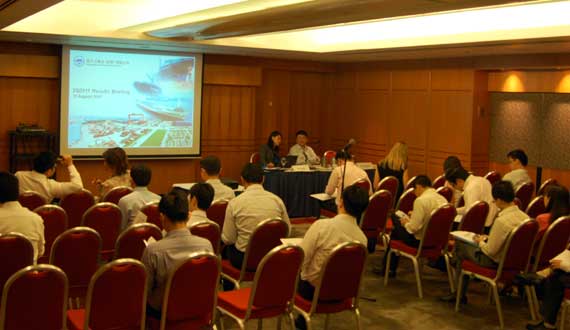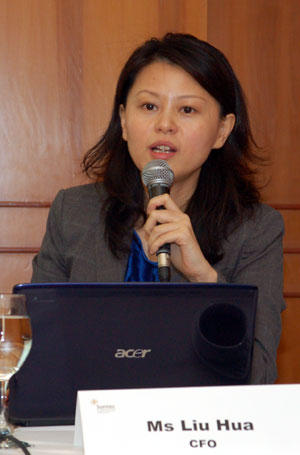
THANKS TO active management of its huge cash hoard, Yangzijiang has posted a 20% growth in 2Q2011 net profit attributable to shareholders of Rmb 963.9 million despite a weak market for building new bulk carriers.
Group revenues edged up 3% to Rmb 3.2 billion, but lower newbuilding prices coupled with higher steel prices resulted in a 8% contraction of gross profits to Rmb 698.8 million.
86.5% of Yangzijiang’s top line comes from newbuilding of containerships and dry bulk carriers.
Shipbuilders are now challenged by inflationary pressures, rising costs of financing, rising working capital needs, sluggish vessel prices and weak newbuilding demand for dry bulk carriers.
For Chinese shipbuilders, this is worsened by the depreciation of the USD against the Rmb.
But for Yangzijiang with its huge cash hoard and financial assets of Rmb 12.8 billion, rising interest rates can be a welcome change.

Yangzijiang's active management of its cash and liquid assets has borne fruits in a 81%-surge in other income and a 16-fold jump in other gains, and this helped lift net margins a good 10 percentage points to reach 30.5%.
This is the reason for the unusual phenomenon of its net margins being higher than gross margins of 22.1%.
At its 2Q2011 results briefing at Suntec City Convention Center yesterday, executive chairman Ren Yuanlin and CFO Liu Hua shed light on Yangzijiang’s much-applauded cash management strategy for about 40 investment analysts.
The shipbuilder holds a whopping Rmb 10.0 billion of held-to-maturity financial assets in fully-protected debt investments backed by shares, land, guarantees by institutions such as banks, insurers or governments.
”We have had a held-to-maturity financial portfolio using very conservative investment criteria since 2006 and have yet to lose money in any investment,” revealed Mr Ren.
From Rmb 30 million in 2007, the size of its held-to-maturity financial portfolio has ballooned over 300 times in 5 years to Rmb 10.0 billion as at Jun 2011, and contributed 27.2% to 1H2011 pre-tax profits in other income.
Another 18% of pre-tax profits were other gains from USD/RMB and USD/SGD currency forward contracts used as hedging instruments for USD shipbuilding contracts.

Photo by Sim Kih
”These high-yielding investments are Yangzijiang’s response to -2.9% real rates in China. This is especially important for Yangzijiang, which is long cash (in retained profits and customer deposits) and short physical assets (vessels/shipyard construction),” according to Barclays’ marine transportation and bank analysts in its 22 Jul report.
Barclays is overweight on Yangzijiang with a price target of S$2.20, translating to upside of 93.8% based on its last close price of S$1.135.
Breaking into South Korea’s turf of large containerships
A second highlight for Yangzijiang in 2Q2011 was its win of US$7 billion worth of contracts to build 10,000 TEU containerships for Seaspan, a global leader in container shipping.
Containerships of this size are a first for China. Winning this contract created a stir in China and South Korea shipbuilding circles because South Korean yards had previously monopolized this category of vessels, said Mr Ren.
According to him, the key reason Yangzijiang clinched the order was the superiority of its vessel design, which is cutting edge, featuring fuel efficiency and a low carbon footprint.
A second factor was the support shown by Chinese state-owned banks in providing the customer with a US$5 billion credit facility pursuant to China’s policy for promoting the domestic shipbuilding industry.
Thirdly, given the increasingly high working capital required of shipyards, Seaspan also took into account Yangzijiang’s huge financial reserves.
Related story: YANGZIJIANG, DAIRY FARM, GCL-POLY: What Analysts Now Say...






